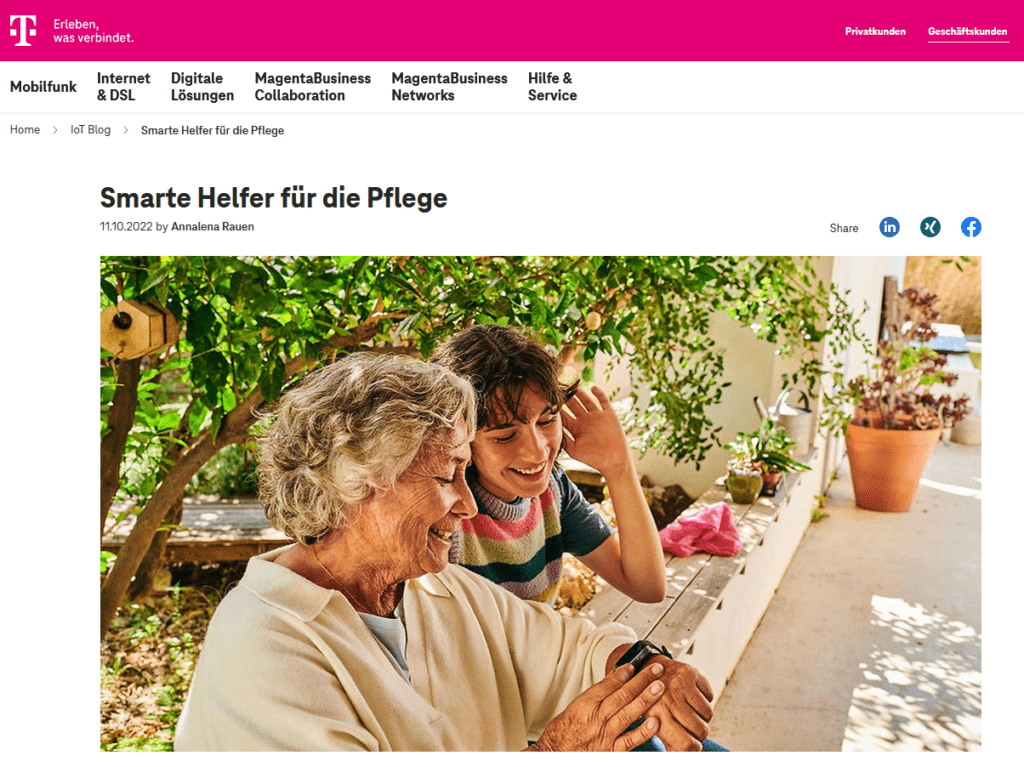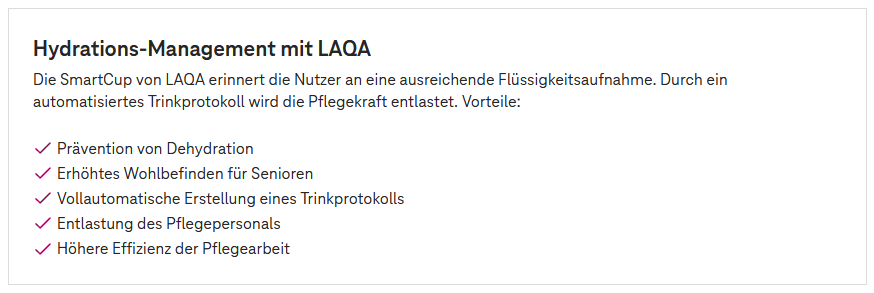The Internet of Things (IoT) uses sensors, data transmission technology and analytics to turn conventional products into intelligent, networked products. In the concept of Ambient Assisted Living (AAL) for senior citizens, patients or people with disabilities, for example, a networked dispenser recognizes whether a medication is being taken regularly; activity trackers check whether the wearer is following the recommendations of doctors and physiotherapists; a networked scale or blood pressure monitor gives the doctor remote indications of the patient’s state of health. In the case of mobile products, mobile radio is particularly suitable for transmitting measurement data thanks to its reliability, worldwide distribution and security standards.
These “Smart Connected Products” also include the SmartCup from LAQA, a smart drinking cup for care facilities. Because we drink too little, especially in old age. Our body needs a regular supply of water for various reasons: to regulate its temperature, to transport nutrients and oxygen in the blood or to excrete toxins. This is why the German Nutrition Society (DGE) recommends drinking at least 1.5 liters of liquid every day. But not everyone manages to do this, whether due to a supposed lack of time, forgetfulness or a lack of thirst.



